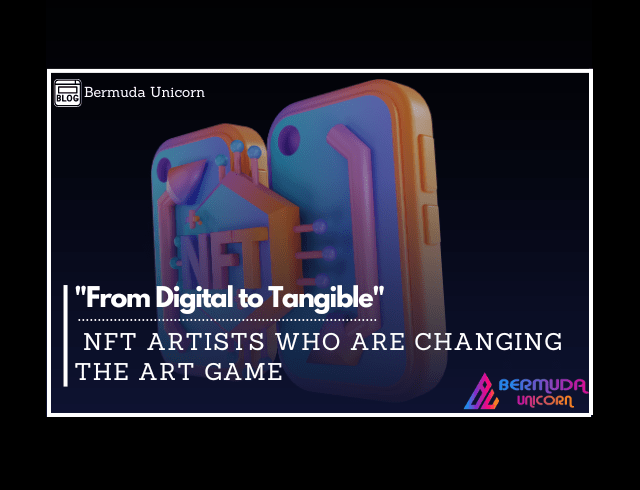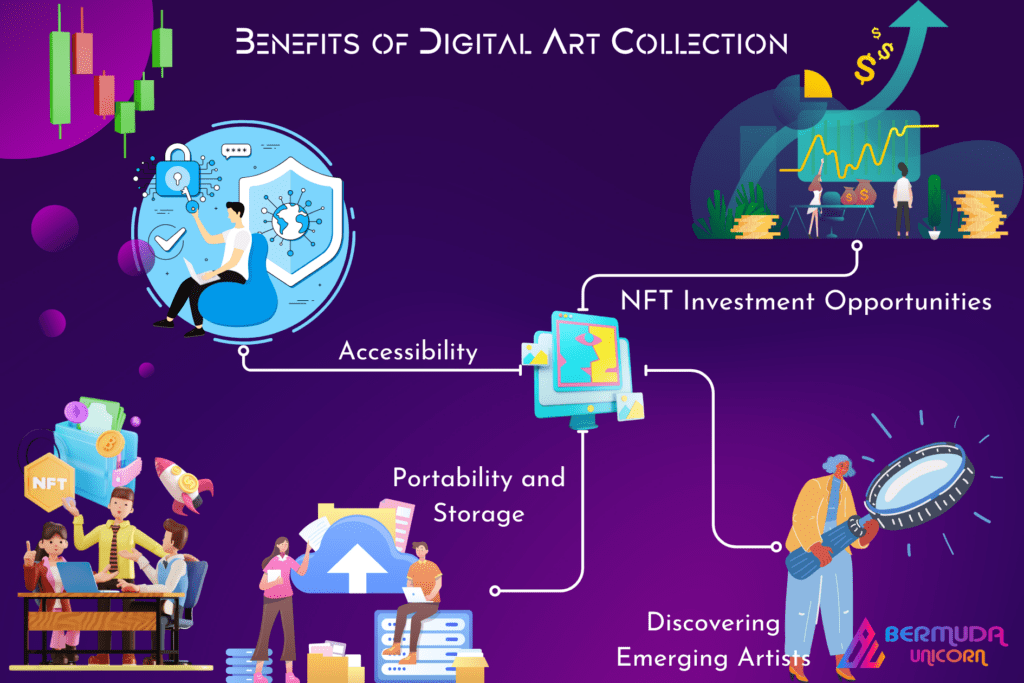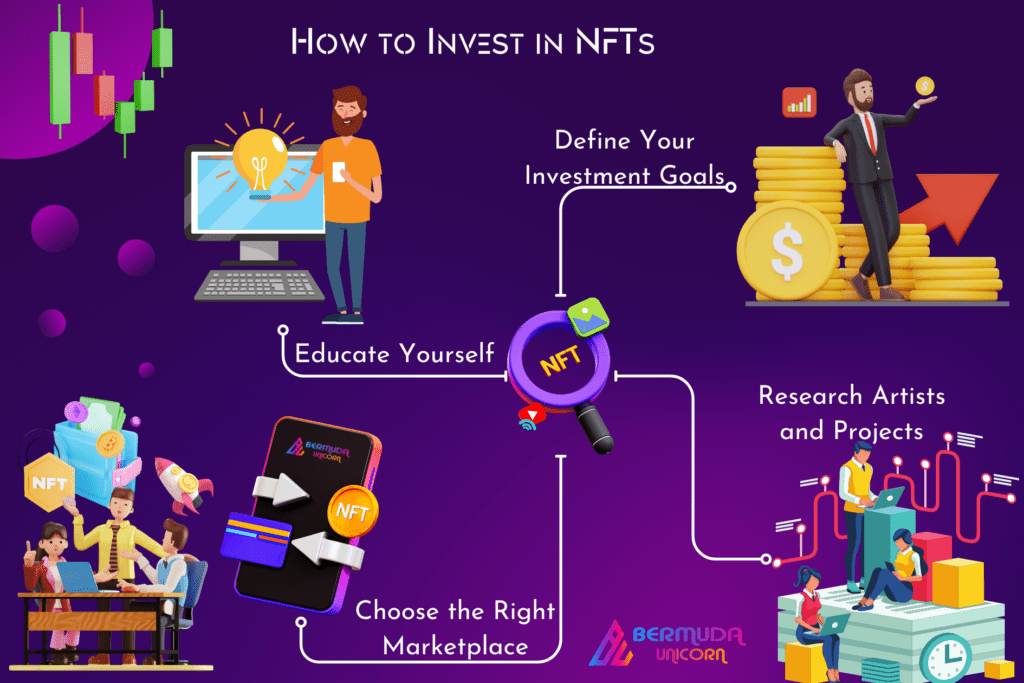

In the 21st century, NFT Artists are becoming increasingly popular. With the rise of blockchain technology, Non-Fungible Tokens (NFTs) have revolutionized the way fine art is bought and sold around the world. NFTs have become a respected form of tangible artwork that can be used to buy and sell everything from digital paintings to physical sculptures with the help of NFT Artists.
Exploring the World of NFTs

The world of Non-Fungible Tokens (NFTs) is a rapidly growing industry that is changing the way we perceive art. NFTs are digital assets that are unique and cannot be replicated. These tokens have become increasingly popular among artists, collectors, and investors because of their ability to authenticate ownership and provide a new way for creators to monetize their work.
NFT artists are now exploring different ways to showcase their artwork. Some NFT artists have even started creating tangible items such as sculptures or paintings that come with a digital token representing the ownership of the physical item. This allows collectors to have both a physical representation of the artwork as well as an authenticated digital copy.
NFT Artists‘ shift towards tangible NFTs has opened up a new avenue for artists who want to explore different mediums while still retaining control over their creations. By combining traditional art forms with blockchain technology, these artists are pushing boundaries and changing the game in the world of art collecting.
NFT Artists Doing it Big in the NFT Scene
In the world of digital art, non-fungible tokens or NFTs have become a revolutionary way for NFT Artists to monetize their work. Some artists who are taking advantage of this new technology include Trevor Jones, Mad Dog Jones, and Beeple. Trevor Jones is known for his pop culture-inspired pieces that often feature celebrities like Kanye West and Michael Jordan. His recent NFT collection, “The Bitcoin Angel,” sold for over $3 million.
Mad Dog Jones is another artist who has found success in the NFT scene. His work combines elements of anime and cyberpunk, with a focus on social commentary. In February 2021, he sold an NFT piece titled “REPLICATOR” for nearly $4 million.
Perhaps the most well-known artist in the NFT scene is Beeple (real name Mike Winkelmann). He gained worldwide attention when he sold a single JPEG file titled “Every Day: The First 5000 Days” at Christie’s auction house for $69 million. The piece is a compilation of 5,000 individual works that Beeple had created over 13 years. This sale made history as the first-ever auction by a major auction house to offer a purely digital artwork with an NFT attached to it.
Benefits of Digital Art Collection from NFT Artists

Digital art is no longer just a trend, but a legitimate form of art that has gained popularity over the years. The rise of non-fungible tokens (NFTs) has opened up numerous opportunities for artists to showcase their work and reach a larger audience. One major benefit of digital art collections is the accessibility it provides to people who may not have access to traditional galleries or museums. With just an internet connection, anyone can browse through various digital art collections from anywhere in the world.
Another advantage of having a digital art collection is the flexibility it offers in terms of display options. Unlike traditional artwork that requires expensive framing and maintenance costs, digital artwork can be displayed on various platforms such as social media, websites, and even virtual reality experiences. This allows artists greater control over how their work is presented and also opens up new avenues for revenue streams.
Lastly, owning a digital art collection means having access to unique and one-of-a-kind works that are impossible to replicate physically. NFTs provide proof of ownership that guarantees authenticity and rarity which adds value to any collection. This ensures that the artist’s work retains its monetary value even as it changes hands digitally over time. Overall, owning a digital art collection presents numerous benefits that make it an exciting addition to any modern collector’s portfolio.
Challenges Facing NFT Artists
One of the biggest challenges facing NFT artists is the issue of authenticity. Since NFTs are digital assets, there is a risk that they can be copied or reproduced without permission. This makes it difficult for artists to maintain control over their work and ensure that they receive proper credit and compensation for their creations.
Another challenge that NFT artists face is the lack of regulation in the industry. While blockchain technology provides a secure way to authenticate ownership of digital assets, there are no clear guidelines or standards for how NFTs should be created or sold. This has led to some confusion and uncertainty around issues such as copyright infringement, licensing agreements, and intellectual property rights.
Finally, many NFT Artists struggle with finding an audience for their work. While the rise of online marketplaces like Bermuda Unicorn has made it easier to sell NFTs directly to collectors, competition within the space is fierce, and standing out from the crowd can be difficult. As more artists enter the market each day, finding a niche and building a following requires creativity, persistence, and patience.
How to Invest in NFTs

NFTs or non-fungible tokens have disrupted traditional art collecting by transforming the way we perceive ownership and value. With the rise of digital art, NFTs have paved the way for artists to monetize their work in unprecedented ways. Investing in NFTs can be a lucrative opportunity, but it requires a certain level of understanding and strategy.
Firstly, it’s important to identify promising these whose works are likely to be appreciated over time. Researching an artist’s background, track record, and reputation is essential before investing in their NFTs. It is also essential to understand the underlying blockchain technology that makes these transactions possible and secure.
Secondly, investors need to stay informed about market trends, changes in legislation, and any potential risks involved with buying or selling NFTs. As with any investment opportunity, there are no guarantees of returns on investments – this necessitates caution when investing large sums of money into NFTs.
In conclusion, investing in NFTs should be approached with caution and knowledge about the underlying technology behind them as well as research into potential opportunities. While there is risk involved with any investment opportunity like all investments; proper due diligence may result in high rewards down the line!
Conclusion: Empowering New Generation of Artists
The rise of NFTs has opened doors for a new generation of artists looking to make their mark in the art world. With the ability to authenticate and sell digital artwork as unique pieces through blockchain technology, creators are no longer limited by traditional barriers to entry. This newfound accessibility is empowering artists from diverse backgrounds who might not have had access to galleries or established collectors.
Furthermore, NFTs are enabling artists to take ownership of their work in a way that was previously impossible. No longer dependent on intermediaries such as dealers or auction houses, creators can now maintain control over the distribution and pricing of their art. This newfound autonomy is allowing many emerging artists to establish themselves as independent entrepreneurs while also building direct relationships with buyers.
In conclusion, the emergence of NFTs is paving the way for a new era in which more people have access to artistic creation and appreciation than ever before. As these technologies continue to evolve, we can expect even greater democratization of art-making and consumption, with opportunities for all types of artists to reach new heights of success and recognition.